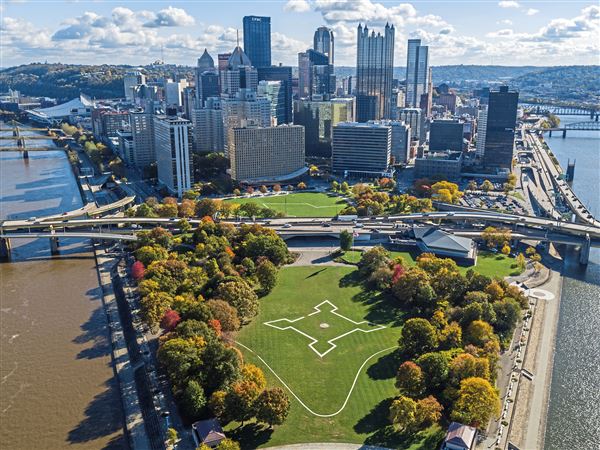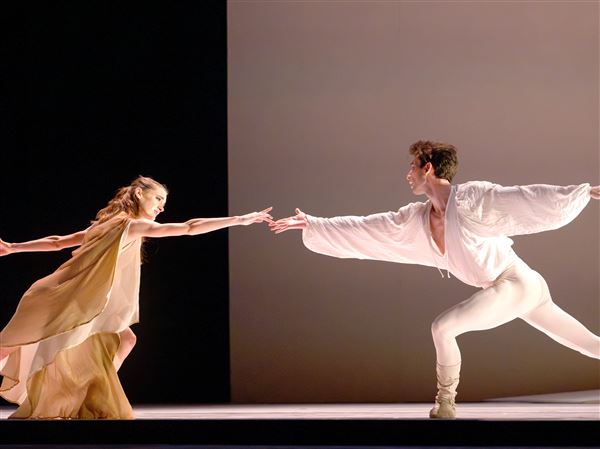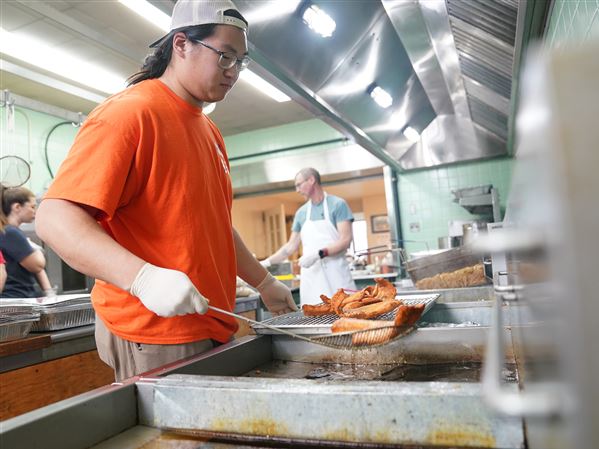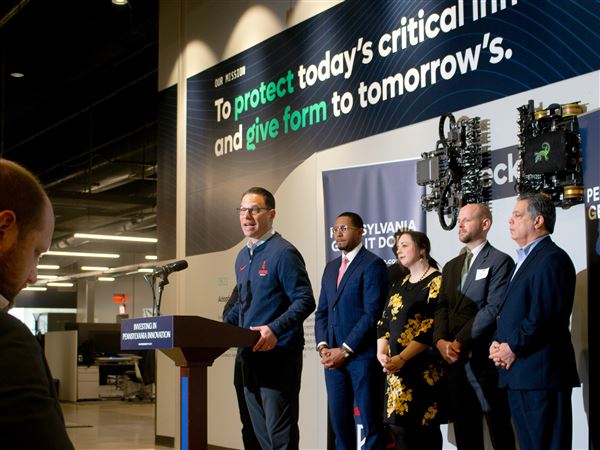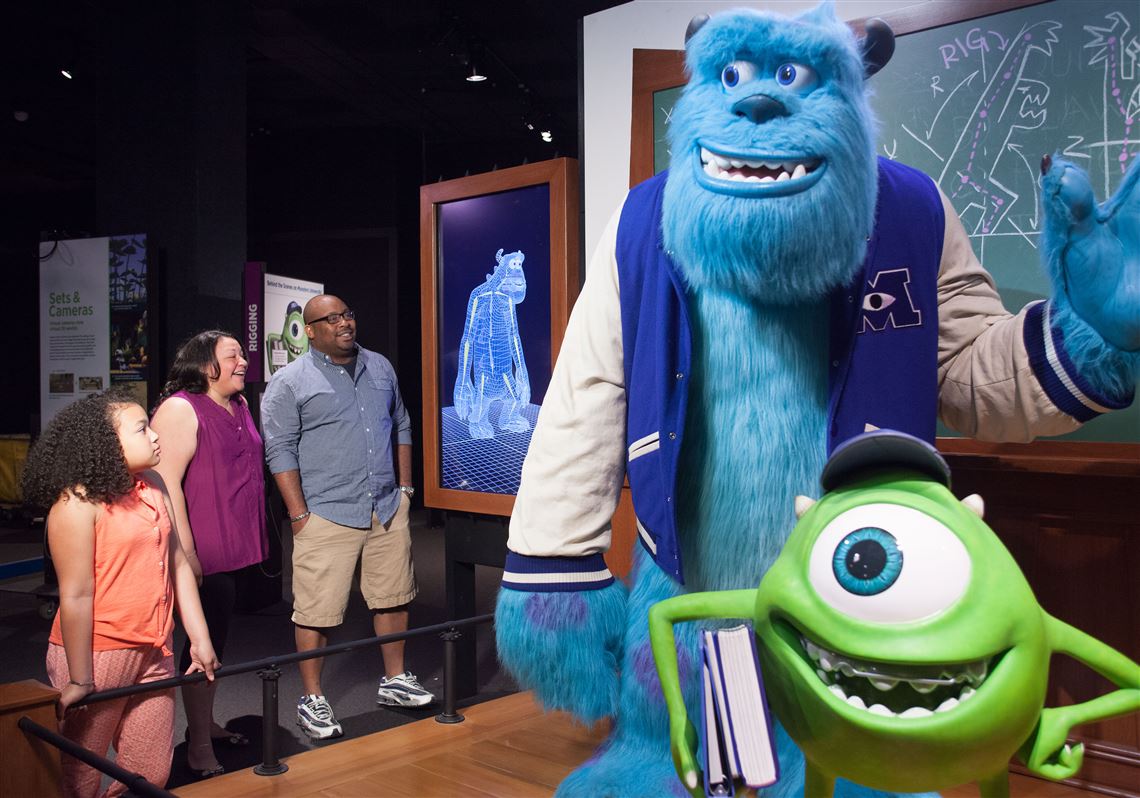Pixar has taken our imaginations to infinity and beyond and back again, but unless you’ve sat through the making-of shorts on the DVDs, you don’t know how the magic happens on Park Avenue in Emeryville, Calif.
Along with some splashy fun, “The Science Behind Pixar,” opening Saturday at Carnegie Science Center, is going to make that learning process unavoidable.
Created by the Museum of Science, Boston; and Pixar Animation Studios, the exhibition is a two-story, 12,000-square foot “playground” with more than 50 interactive elements.
If you’re thinking this a change of pace for the Science Center, you’re right.
“This is the first show like this we've done,” says Science Center director Jason Brown. “Our last one was ‘Titanic,’ which we just closed about a month ago. Other than that, we had ‘Pompeii,’ we had ‘Mummies.’ we had ‘Art of The Brick,’ which was an artist who had made these giant sculptures out of LEGOs. But we haven't had anything that's based on a film or film companies.”
Visitors will have the have opportunity to take selfies with life-sized recreations of Buzz Lightyear, Dory from “Finding Nemo,” Mike and Sully from “Monsters Inc.”, Edna Mode from The Incredibles” and lonely, lovable WALL-E.
Beyond that, they will also be able to manipulate the facial expressions of Jessie from “Toy Story 2,” right down to the eyebrows; customize a car hood in Ramone’s House of Body Art from “Cars”; direct a school of fish akin to Mr. Ray from “Nemo”; create a robot friend for WALL-E using magnetic body parts; explore the set of “A Bug’s Life”; and more.
“The ‘Finding Nemo’ one is like creating the environment, like how do you create that feeling of being underwater?” Brown says. “And then there's also things like how do you take a two-dimensional shape and extrude it to make a three-dimensional shape? How do you give hair a bounce, like a realistic bounce that's impacted by gravity? How do you make gravity feel real in an animated movie? It's just amazing when you think about how much thought and detail goes into creating a film like this. But then how they actually make it happen is really incredible.”
Visitors will also see the bigger picture of how the film evolves from concept to reality.
“They'll see terms like animation and rendering and rigging and modeling,” Brown says. “But not only will they learn how to make a film, they'll actually be able to participate, sort of, in the basics that computer animators go through to create these movies. I would guess that, of all the exhibits we've ever had, I think it will be the one that people will spend the most time in because there's so many opportunities to do stuff in addition to actually seeing stuff.”
The Pixar energy will not be contained in the traveling exhibition area. There will be “Toy Story Tuesdays” in the Rangos Giant Cinema with screenings of the films; weekend showings of other Pixar films; a Pixar laser show in the Buhl Planetarium; a Pixar-focused, 21-plus night free of kids; and a scavenger hunt for Pixar figures in the Miniature Railroad and Village.
Coincidentally, it’s all timed to the release of “Inside Out 2,” the sequel to the 2015 film about live personified emotions and the 28th offering from Pixar, which launched with “Toy Story” in 1995.
“We're trying to rebrand Pittsburgh as ‘Pixarburgh’ for the summer,” Brown says.
“It’s really the convergence of science and tech with art and creativity, which is pretty cool because, you know, as the Carnegie Museums, we are both science museums and art museums. So, this exhibition is really the perfect blend of what we try and do. And I would be remiss if I didn't say that the goal of this exhibition is we're hoping to create quite a buzz in Pittsburgh — pun intended.”
Timed tickets are $22; $15 members; $18 kids 3-12; $20 seniors (65+) at CarnegieScienceCenter.org/Pixar.
First Published: May 21, 2024, 9:30 a.m.
Updated: May 22, 2024, 6:34 p.m.

